Abstract
The terminal deletion with stable acentric fragment of 1q was found in a girl with multiple congenital malformations and severe mental retardation. The karyotype of both parents was normal, and the aberration appears de novo. The medium did not influence the expression of the aberration.
Full text
PDF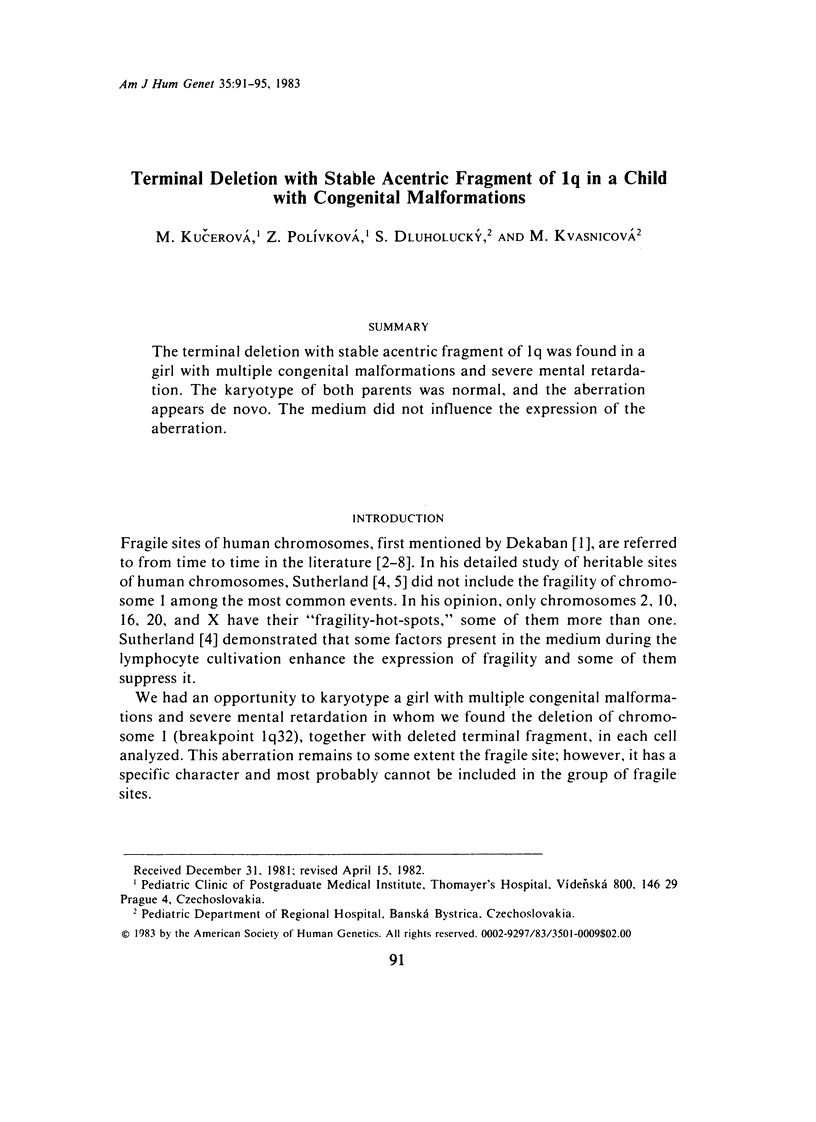
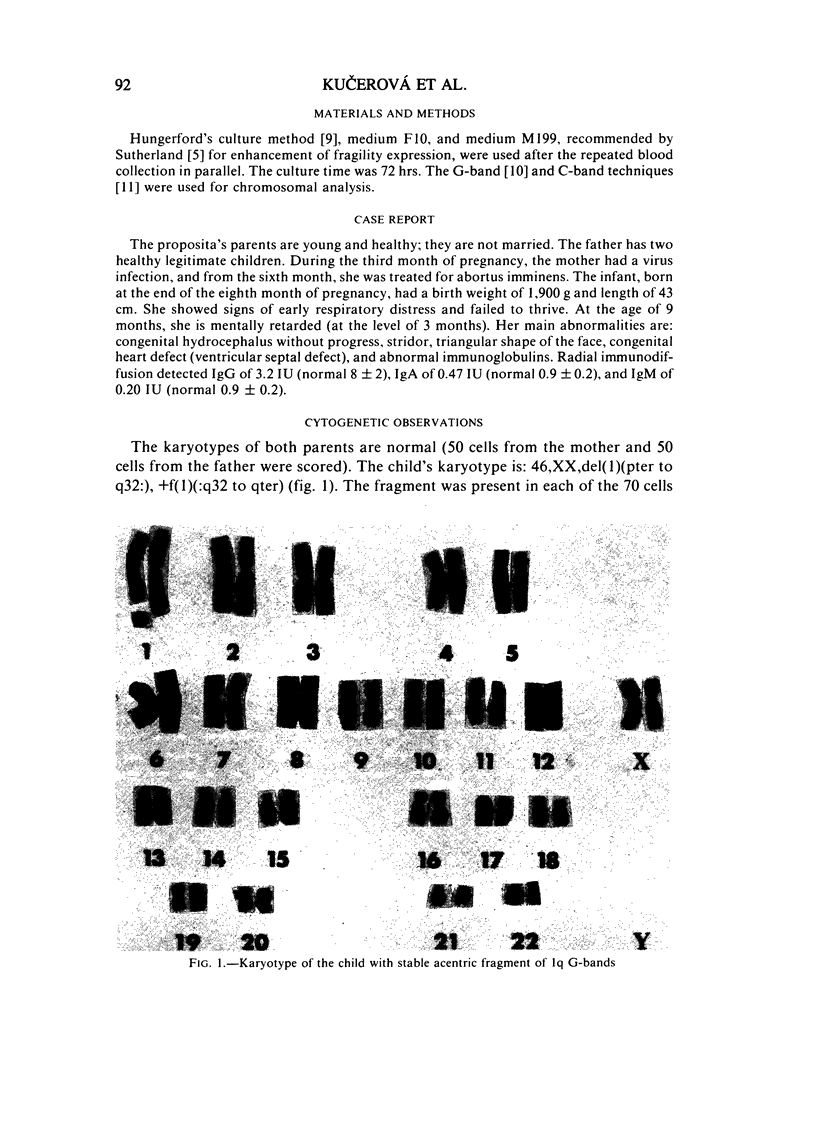
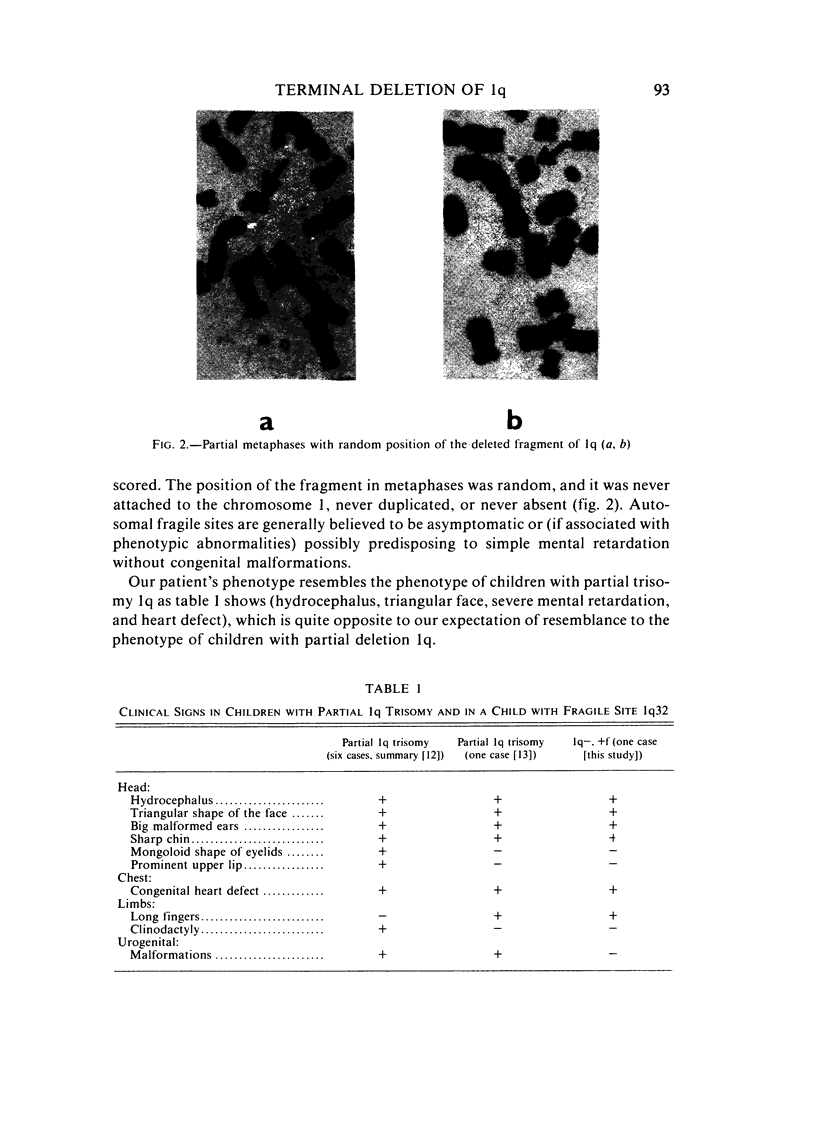
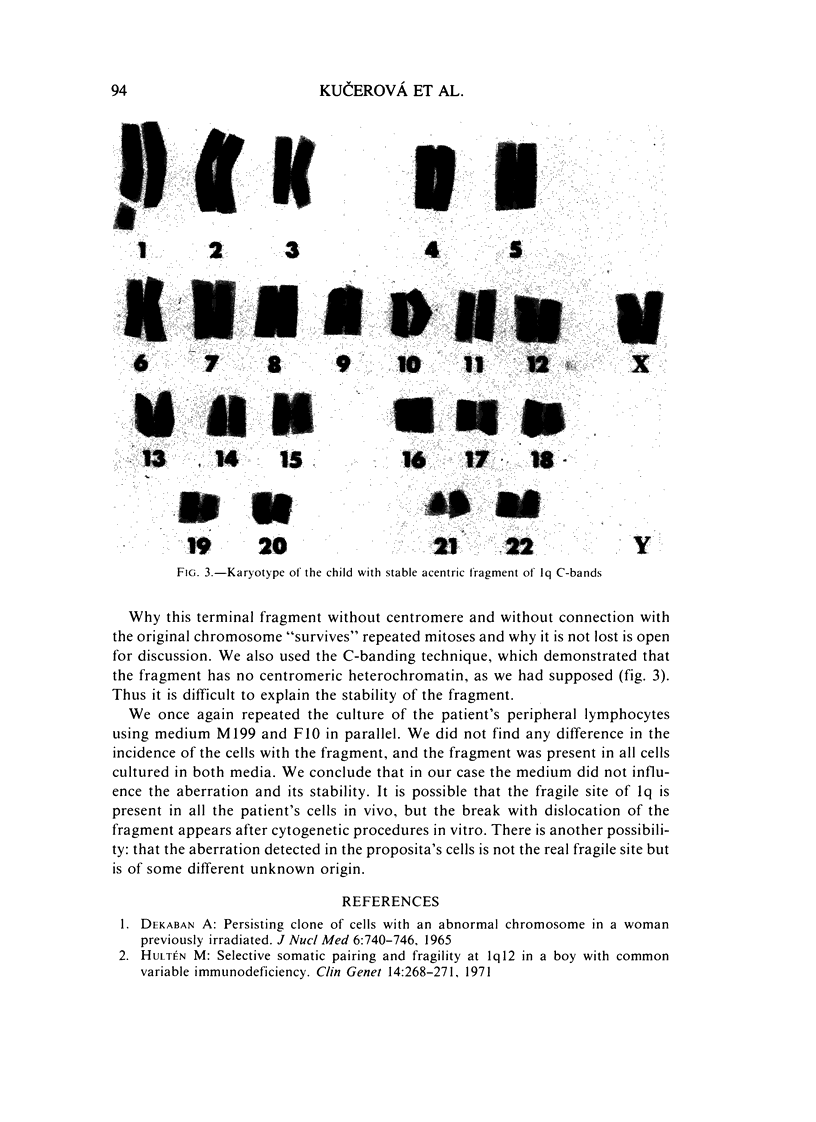
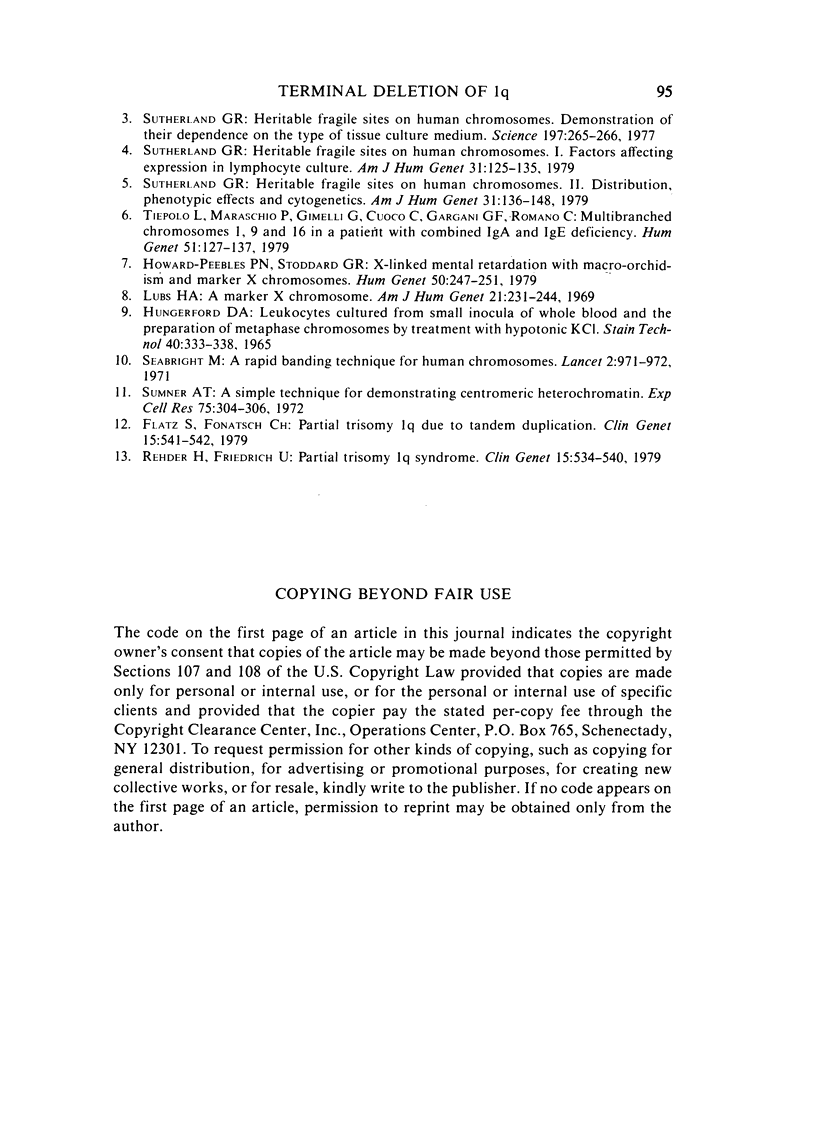
Images in this article
Selected References
These references are in PubMed. This may not be the complete list of references from this article.
- Dekaban A. Persisting clone of cells with an abnormal chromosome in a woman previously irradiated. J Nucl Med. 1965 Oct;6(10):740–746. [PubMed] [Google Scholar]
- Flatz S., Fonatsch C. Partial trisomy 1q due to tandem duplication. Clin Genet. 1979 Jun;15(6):541–542. doi: 10.1111/j.1399-0004.1979.tb00839.x. [DOI] [PubMed] [Google Scholar]
- Howard-Peebles P. N., Stoddard G. R. X-linked mental retardation with macro-orchidism and marker X chromosomes. Hum Genet. 1979 Sep;50(3):247–251. doi: 10.1007/BF00399389. [DOI] [PubMed] [Google Scholar]
- Hungerford D. A. Leukocytes cultured from small inocula of whole blood and the preparation of metaphase chromosomes by treatment with hypotonic KCl. Stain Technol. 1965 Nov;40(6):333–338. doi: 10.3109/10520296509116440. [DOI] [PubMed] [Google Scholar]
- Lubs H. A. A marker X chromosome. Am J Hum Genet. 1969 May;21(3):231–244. [PMC free article] [PubMed] [Google Scholar]
- Rehder H., Friedrich U. Partial trisomy 1q syndrome. Clin Genet. 1979 Jun;15(6):534–540. doi: 10.1111/j.1399-0004.1979.tb00838.x. [DOI] [PubMed] [Google Scholar]
- Seabright M. A rapid banding technique for human chromosomes. Lancet. 1971 Oct 30;2(7731):971–972. doi: 10.1016/s0140-6736(71)90287-x. [DOI] [PubMed] [Google Scholar]
- Sumner A. T. A simple technique for demonstrating centromeric heterochromatin. Exp Cell Res. 1972 Nov;75(1):304–306. doi: 10.1016/0014-4827(72)90558-7. [DOI] [PubMed] [Google Scholar]
- Sutherland G. R. Fragile sites on human chromosomes: demonstration of their dependence on the type of tissue culture medium. Science. 1977 Jul 15;197(4300):265–266. doi: 10.1126/science.877551. [DOI] [PubMed] [Google Scholar]
- Sutherland G. R. Heritable fragile sites on human chromosomes I. Factors affecting expression in lymphocyte culture. Am J Hum Genet. 1979 Mar;31(2):125–135. [PMC free article] [PubMed] [Google Scholar]
- Sutherland G. R. Heritable fragile sites on human chromosomes II. Distribution, phenotypic effects, and cytogenetics. Am J Hum Genet. 1979 Mar;31(2):136–148. [PMC free article] [PubMed] [Google Scholar]
- Tiepolo L., Maraschio P., Gimelli G., Cuoco C., Gargani G. F., Romano C. Multibranched chromosomes 1, 9, and 16 in a patient with combined IgA and IgE deficiency. Hum Genet. 1979 Oct 1;51(2):127–137. doi: 10.1007/BF00287166. [DOI] [PubMed] [Google Scholar]





